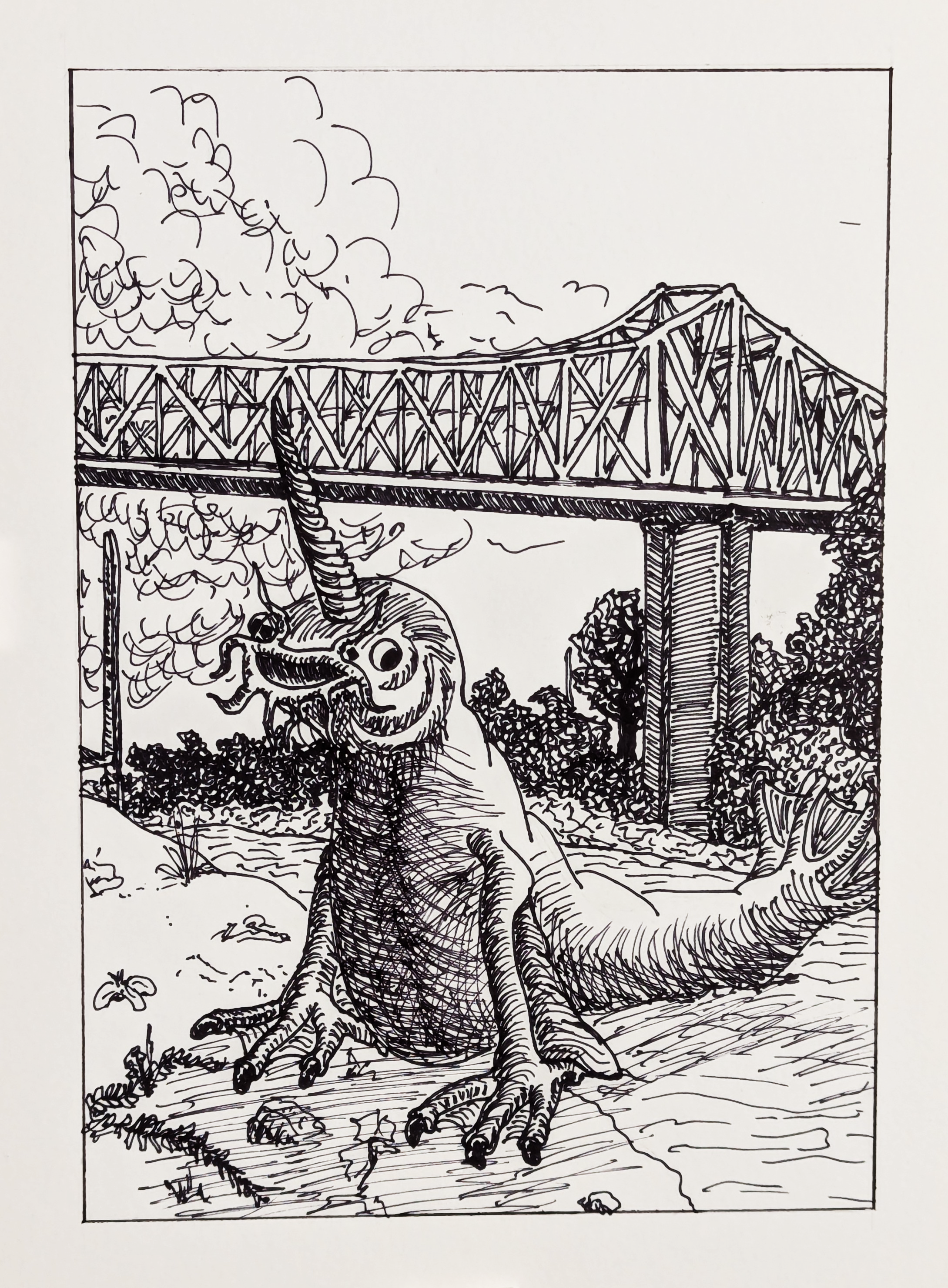When I first ran across this particular cryptid, I thought; “Gee, I guess Arkansas felt left out of the cryptid game”. But they aren’t. Besides this one, they have the Howler and an angry ass three toed psuedo Bigfoot that goes by the name of Fouke Monster.
So they aren’t coming up short.
Still this one was hard to get into at first. The accounts are scattered. The town of Newport is way too into it. On top of all of that, images range from a fish all the way to an elephant seal.
So I started reading up on it.
This one has more basis than most of the popular cryptids. For one, it is an old story. Like pre-European Native American old. Sightings are pretty well documented. A lot of serious people have looked into it…and been convinced “something” was out there. There are numerous species that could feasibly fit at least the majority of the descriptions (alligator gar, manatees, snapping turtles, alligators) and ALL of them could potentially get there.
So I will give it a little more respect.
This one needs better PR though.
I drew it based on an amalgamation of all the witness descriptions. Catfish face, horn on head, large lumpy body, three clawed and webbed toes. The only one I left off was the spikey back and I think that was because I like the idea of a Manatee coming up the river and a small group of them surviving for hundreds of years after there numbers collapsed throughout the Gulf of Mexico.
As always, below is a more complete background on the beasty in question.
White River Monster
Name and Regional Names:
- Primary Name: White River Monster
- Regional Names: “Whitey,” “Newport Monster”
Known Origin and Basic Lore:
- Origin: The legend of the White River Monster dates back to Native American folklore, with modern accounts beginning in the early 1900s.
- Basic Lore: According to local legend, the White River Monster is a large aquatic creature inhabiting the White River in Arkansas. The monster is often described as a benevolent but elusive being, with sightings sparking both fear and curiosity among locals.
Significant Sightings:
- 1937: One of the first well-documented sightings by Bramlett Bateman, who reported seeing a creature with gray skin and a horn protruding from its forehead.
- 1971: A series of sightings reported by various witnesses, leading to a temporary closure of a section of the White River.
- 2000s: Occasional reports from fishermen and boaters, though less frequent and often anecdotal.
Physical Description:
- Size: Estimated to be between 12 to 30 feet in length.
- Color: Generally described as grayish or off-white.
- Distinctive Features: Often depicted with a spiny back, a horn-like appendage on its head, and a serpent-like body.
Behaviors:
- Movement: Described as swimming with undulating motions, occasionally seen breaching the water’s surface.
- Interactions with Humans: Generally shy and reclusive, with no aggressive behaviors reported.
Abilities:
- Speed: Believed to be capable of swift movements in water.
- Camouflage: Its coloration allows it to blend with the river’s murky waters, making it difficult to spot.
Preferred Habitat and Range of Sightings:
- Habitat: Prefers deep, slow-moving sections of the White River, especially near Newport, Arkansas.
- Range of Sightings: Sightings are concentrated in the White River area but occasionally reported in connecting waterways.
Likelihood of Existence Based on Similar Species:
- Comparative Analysis: The White River Monster is often compared to other cryptids like the Loch Ness Monster or Champ. Similarities include elusive behavior and habitat preferences. Some suggest it could be a misidentified large fish (e.g., alligator gar) or an undiscovered species of aquatic reptile.
- Scientific Perspective: While anecdotal evidence and folklore abound, there is no conclusive scientific proof of the White River Monster’s existence. However, the ecological diversity of the White River could feasibly support an unknown species, keeping the legend alive.
References:
- Historical accounts, eyewitness reports, and regional folklore provide the foundation for the White River Monster legend.
- Comparative studies of similar cryptids and known species.


